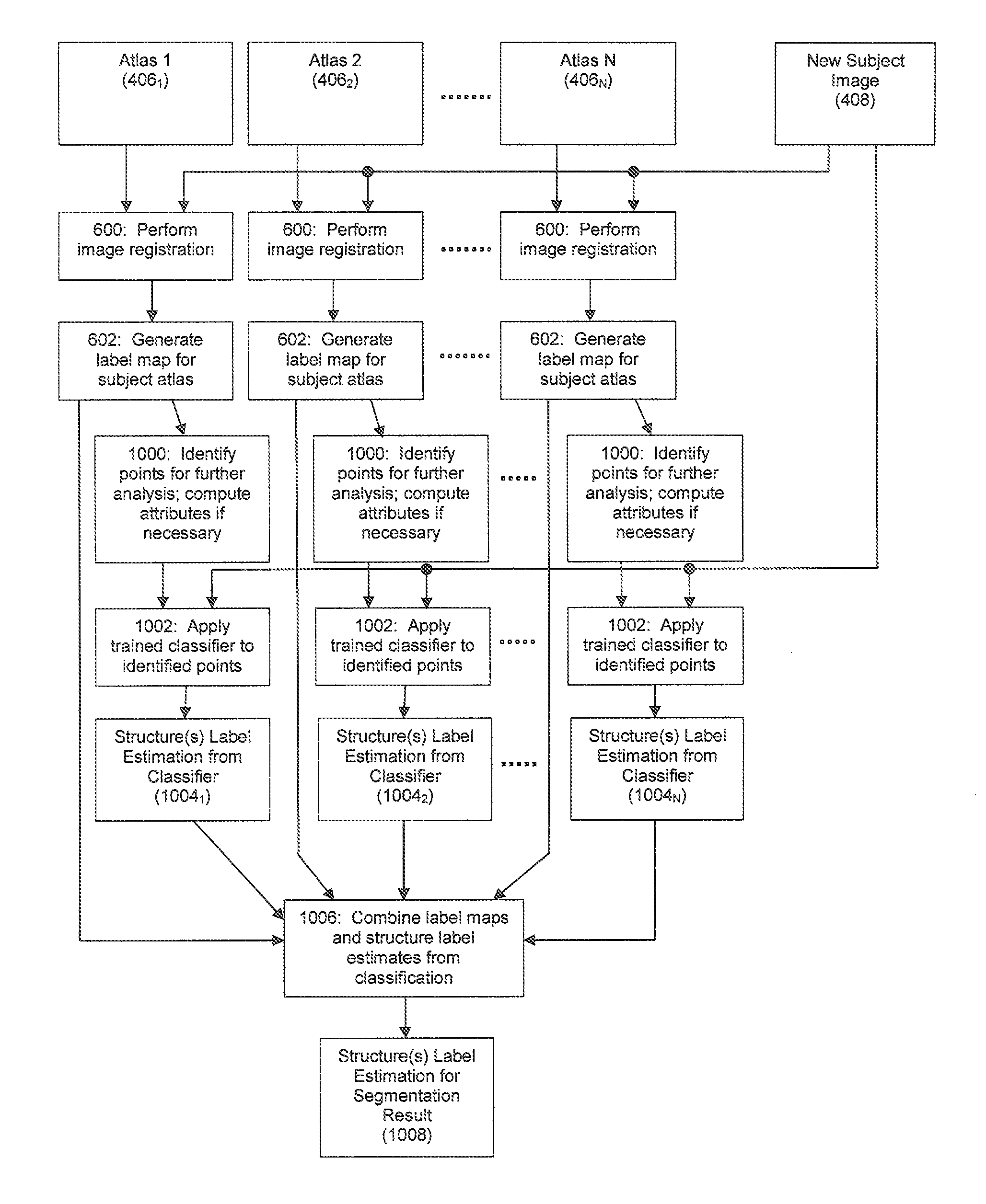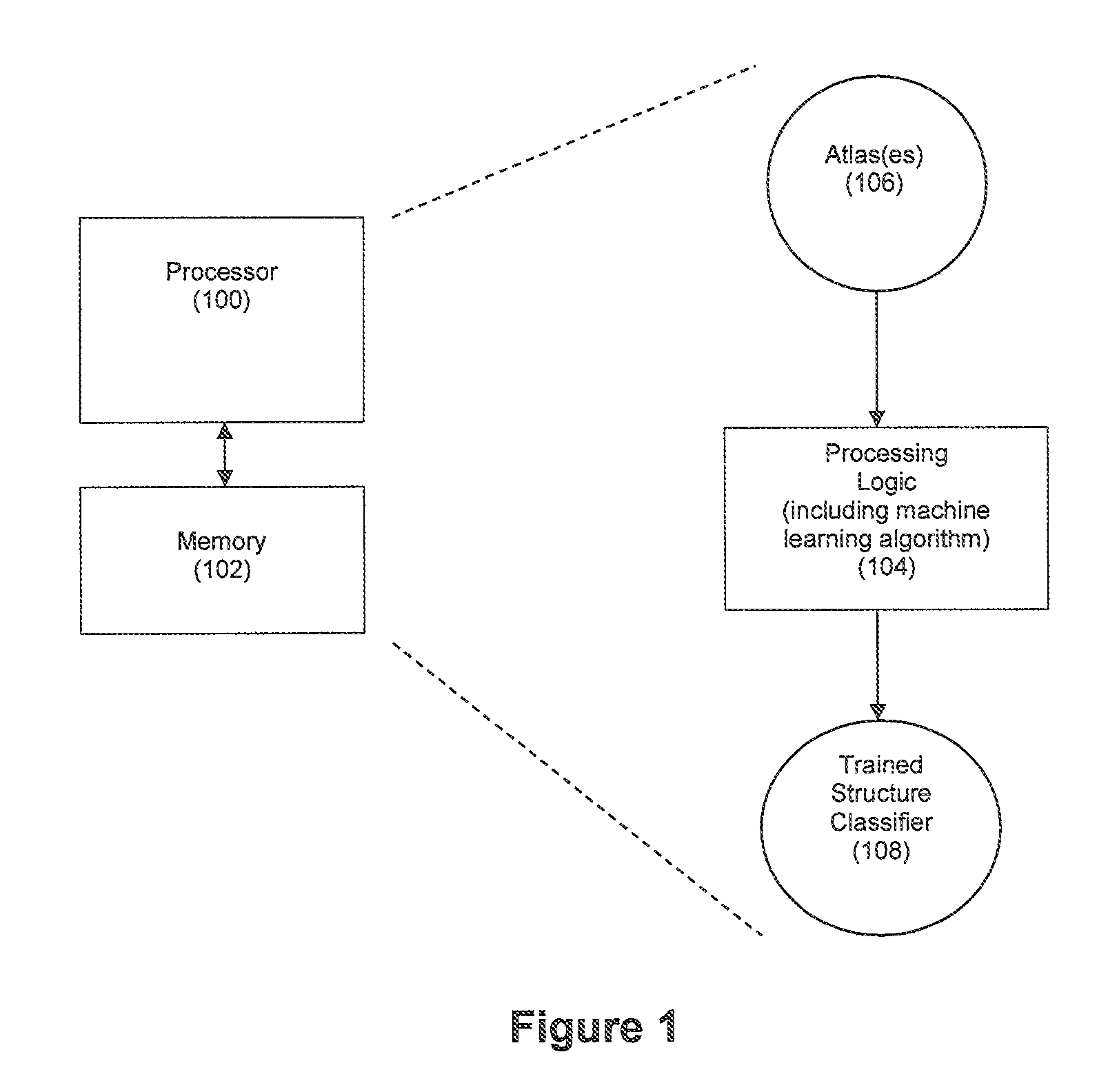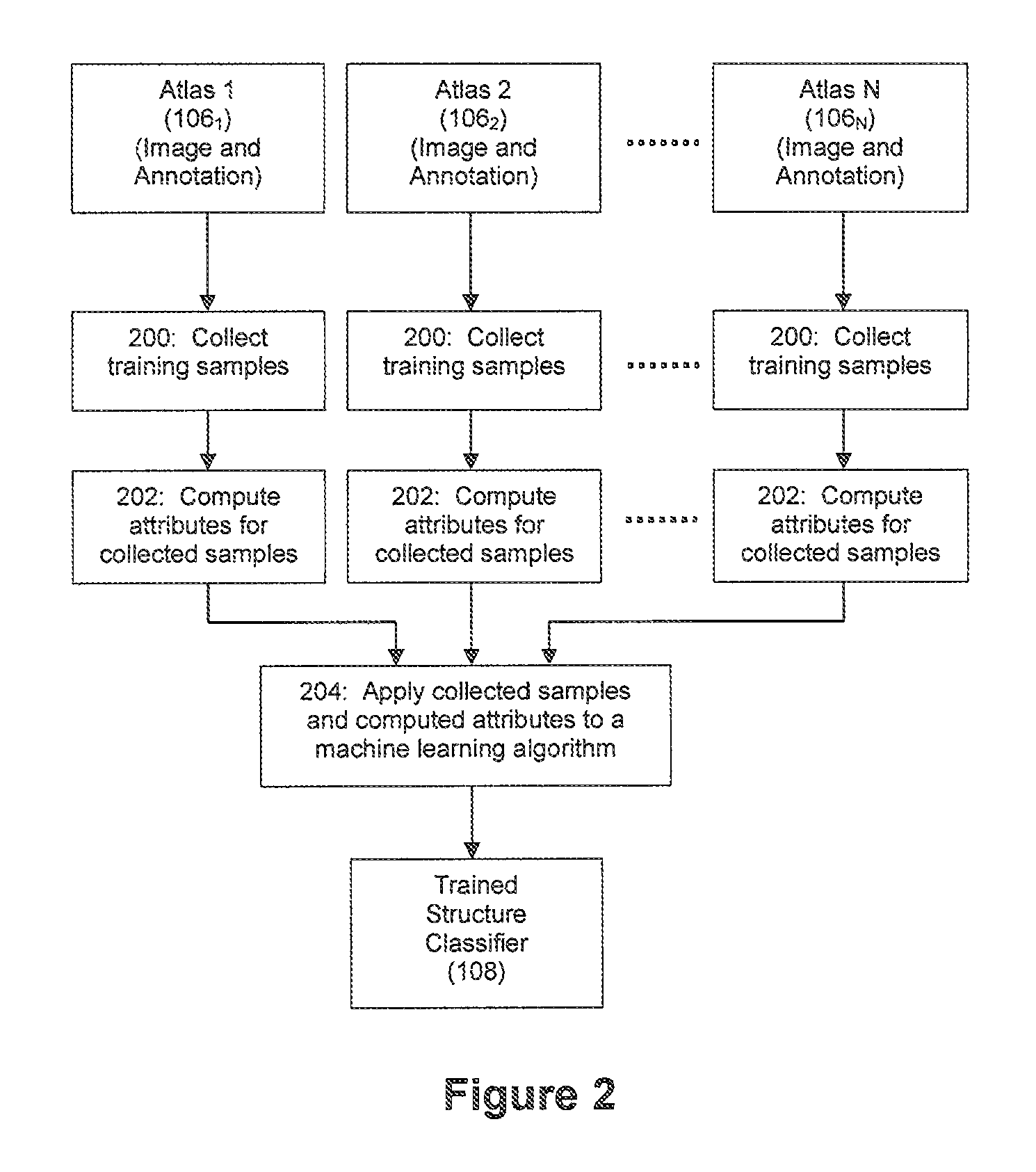Method and apparatus for learning-enhanced atlas-based auto-segmentation
a technology of atlas and autosegmentation, applied in image enhancement, image analysis, instruments, etc., can solve the problems of large intra- and inter-rater variability, tedious manual contouring, time-consuming, etc., and achieve the effect of reducing the number of errors, and reducing the difficulty of manual segmentation
- Summary
- Abstract
- Description
- Claims
- Application Information
AI Technical Summary
Benefits of technology
Problems solved by technology
Method used
Image
Examples
Embodiment Construction
[0022]Various embodiments will now be described that relate to both training an automated structure classifier using a machine learning algorithm and performing learning-enhanced ABAS on a subject image using one or more atlas images and the automated structure classifier.
[0023]It should be understood that the images processed using the techniques described herein can be take any of a number of forms. In various exemplary embodiments, the images can be medical images such as CT images. However, it should be understood that images of different types can be employed. For example, image types such as magnetic resonance (MR) images and ultrasound images could also be processed using the techniques described herein.
[0024]I. Training an Automated Structure Classifier Using Machine Learning:
[0025]FIG. 1 depicts an exemplary embodiment for training an automated structure classifier to detect one or more structures of interest within an image. As shown in FIG. 1, a processor 100 can be confi...
PUM
 Login to View More
Login to View More Abstract
Description
Claims
Application Information
 Login to View More
Login to View More - R&D
- Intellectual Property
- Life Sciences
- Materials
- Tech Scout
- Unparalleled Data Quality
- Higher Quality Content
- 60% Fewer Hallucinations
Browse by: Latest US Patents, China's latest patents, Technical Efficacy Thesaurus, Application Domain, Technology Topic, Popular Technical Reports.
© 2025 PatSnap. All rights reserved.Legal|Privacy policy|Modern Slavery Act Transparency Statement|Sitemap|About US| Contact US: help@patsnap.com



